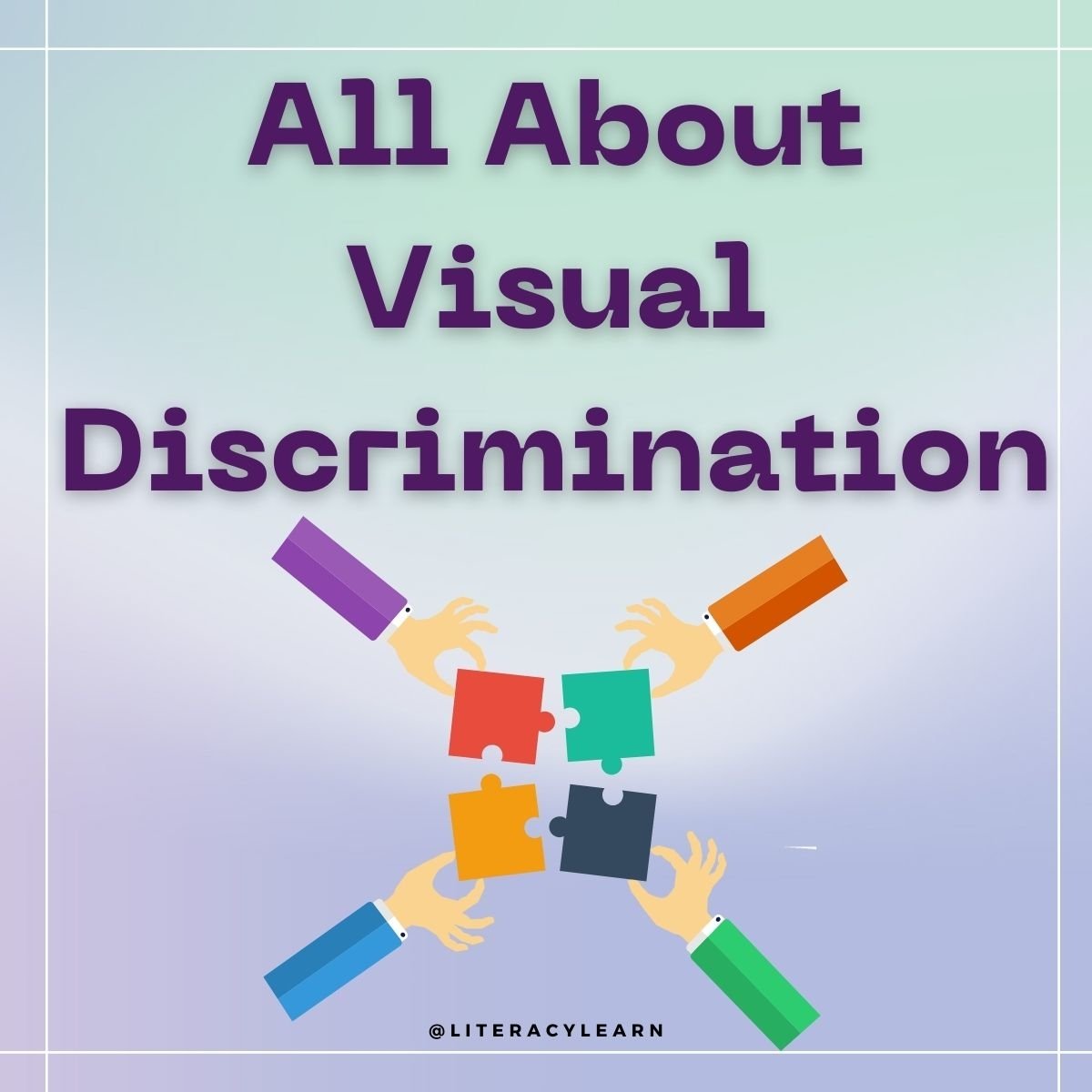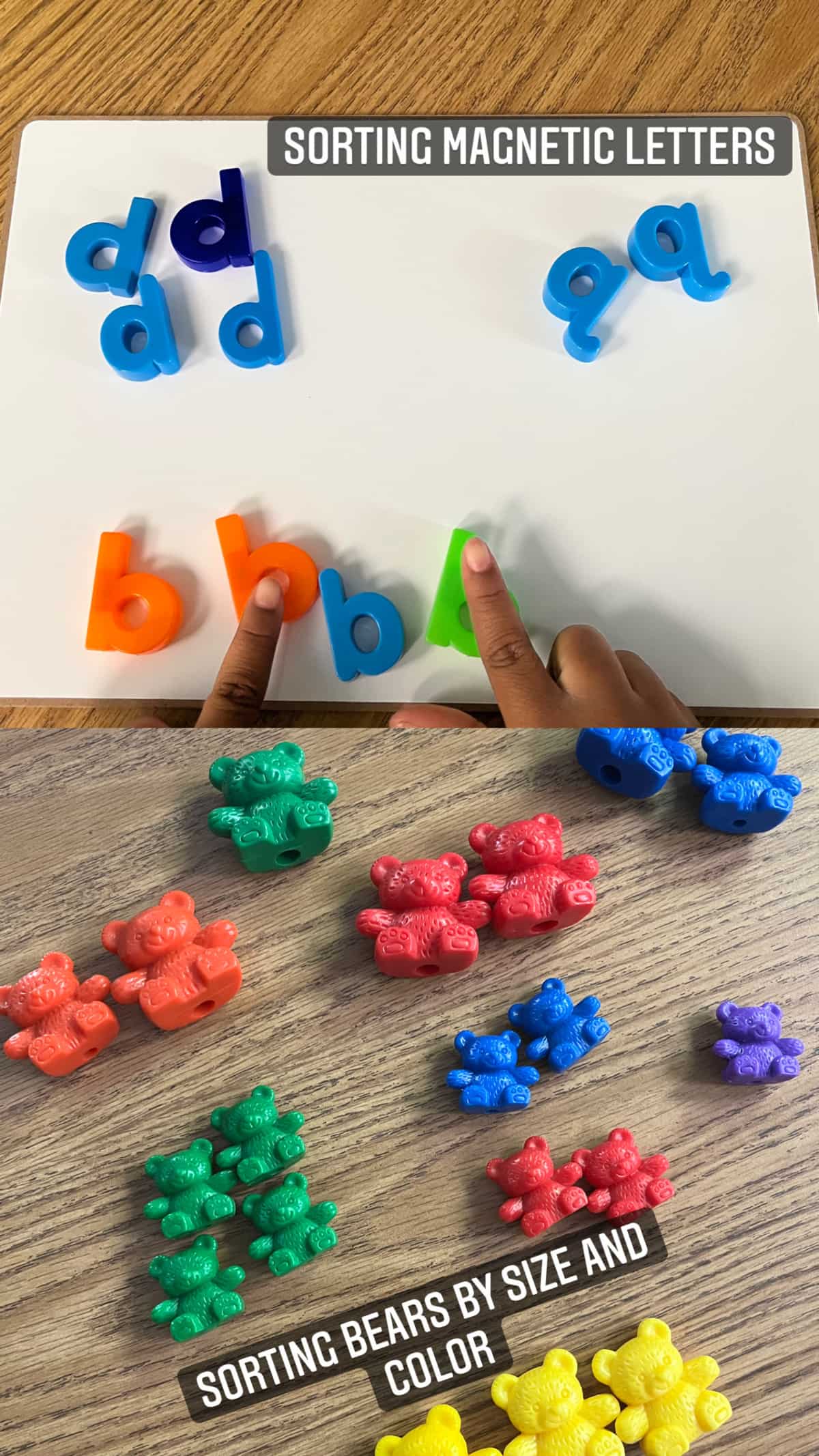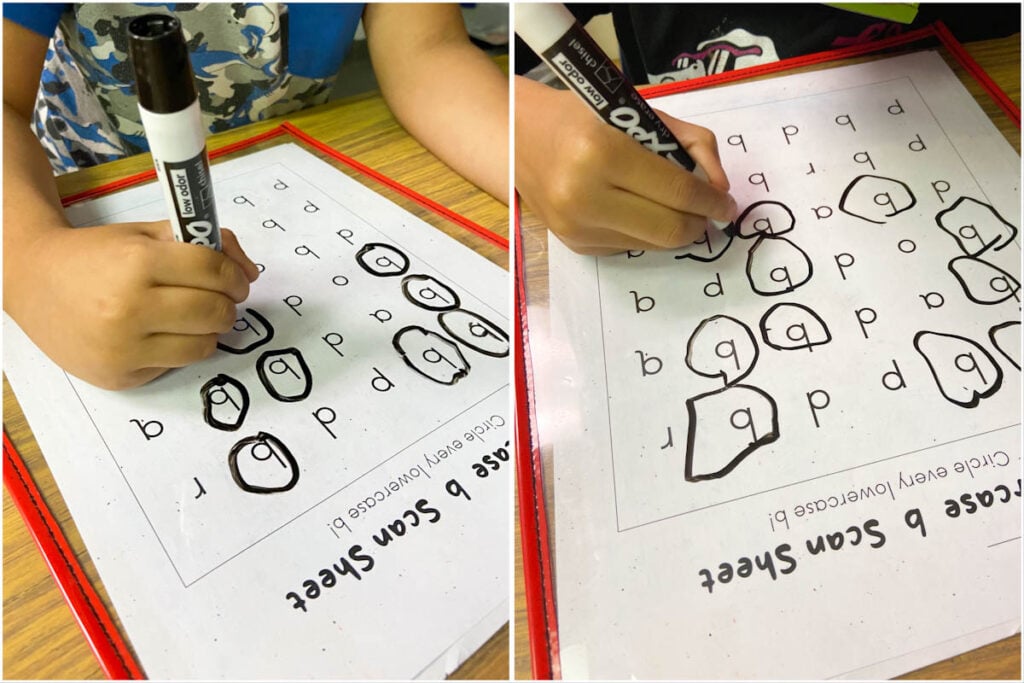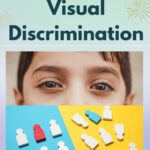All About Visual Discrimination
This post may contain affiliate links. As an Amazon affiliate, we earn from qualifying purchases. See our disclosure policy.
Learn everything you need to know about visual discrimination, including what it is, why it’s important, and how to teach it to students. Get our suggestions for multisensory activities and more resources to help students practice this important skill!

What Is Visual Discrimination?
Visual discrimination is the skill needed to determine the slight visual differences between similar things. It’s an important skill for children to develop because they must be able to discern between printed letters (like b and d) and words (like you and your) so that they can read fluently.
Visual discrimination is all about noticing small details, differences, and similarities. This includes differences or similarities in shapes, colors, patterns, and other details in the positioning of items or objects.
Lots of practice using varied activities is necessary for kids to achieve and improve this skill.
Why It Matters
When children have strong visual discrimination skills, they are able to transfer those skills to reading text. Children need to be able to notice that the letter ‘d’ has a circle with a tall stick, while the letter ‘a’ has a circle with a short stick.
Even though they are visually very similar letters, there is one major difference that sets them apart (the tall versus the short stick).
Kids who have not practiced visual discrimination have a very hard time distinguishing between similar-looking letters and numbers. We often observe students commonly confusing letters and numbers like:
- p / q / b / d
- S / 5
- 6 / 9
- 3 / E
We then observe these deficits transfer to reading words. Think about common sight words like these:
- where / were
- very / every /ever
- want / went
- was / saw
- the / then / they
- though / thought / through
These words are visually very similar, yet their meaning and usage is very different. Think about how strong your visual discrimination skills need to be in order to instantly read these words correctly.
That’s why parents and teachers need to target these skills early! And that is why we’ve created some fun resources to use with younger children to train their eyes to practice noticing slight details (keep reading!).

How to Teach Visual Discrimination
Be sure to explicitly teach this skill and explain that it’s all about noticing the small things. Start with basics like colors and shapes.
Kids have to be able to distinguish red from blue or circles from triangles. Then you can move on to letters, numbers, and words!
👉 Our visual discrimination worksheets are designed to target all aspects of visual discrimination – finding the similarities and differences between shapes, letters, numbers, and objects in fun and engaging ways!

👉 You can practice using worksheets as well as hands-on items like magnetic letters, legos, coins, or other objects. Anything hands-on and engaging is beneficial to noticing those small similarities and differences. For fun ideas and multisensory activities to use, see visual discrimination activities.
Do you remember the ‘Hidden Pictures’ section of Highlights magazine? As a kid, that section was always my favorite! In case you don’t remember these, it was usually a large black and white picture of a particular scene.
Sometimes it would be a scene from a park, or a school, or maybe a football game. Specific objects were hidden inside other larger objects, and it would be the reader’s job to hunt for these hidden pictures.
As a kid, I simply saw this as a fun challenge. As an adult, I now understand that Highlights magazine was including these pages as an engaging way to teach the important skill of visual discrimination.

